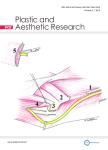Limb preservation with suprafascial and thin perforator flaps: salvaging osteomyelitis, Charcot collapse and critical limb ischemia
作者机构:Division of Plastic and Reconstructive SurgeryBeth Israel Deaconess Medical CenterHarvard Medical SchoolBostonMA 02215USA Division of Plastic and Reconstructive SurgeryUniversity of Colorado Anschutz Medical CenterAuroraCO 80045USA.
出 版 物:《Plastic and Aesthetic Research》 (整形与美容研究(英文版))
年 卷 期:2019年第6卷第8期
页 面:13-23页
学科分类:1002[医学-临床医学] 100214[医学-肿瘤学] 10[医学]
主 题:Perforator flap diabetic foot limb salvage
摘 要:AIM: There are limited reports in the United States demonstrating outcomes of primarily thinned fasciocutaneous flaps in the setting of critical limb ischemia, Charcot collapse and osteomyelitis. We hope to determine patient and flap related outcomes in advanced lower extremity disease. Methods: The authors conducted a retrospective review of fasciocutaneous free flaps of variable thickness for lower extremity salvage. Osteomyelitis and non-osteomyelitis patients were compared according to our primary outcome measures: functional ambulation, bone healing and complications to flap and patient. Subgroups with critical limb ischemia, Charcot collapse and diabetic foot were analyzed separately. Results: Fifty-nine patients underwent free flap reconstruction: osteomyelitis (n = 20, 34%), Charcot collapse (n = 22, 37%), and/or critical limb ischemia (n = 12, 20%). All patients underwent anterolateral thigh flaps tailored for defect-specific thicknesses: 17 superthin, 25 suprafascial, 17 subfascial. There were no significant differences between groups in terms of partial and complete flap loss (P = 1.000 and P = 0.108). Ninety-one percent of patients were ambulatory at follow up. Eighty-tive percent of individuals with osteomyelitis cleared their infection demonstrating radiographic bone healing. Two patients developed recalcitrant deep space infections ultimately requiring amputation. Subgroup analysis did not show any differences in flap related complications within the diabetic Charcot population. In multivariate regression, preoperative revascularization was independently associated with failure of limb salvage. ;Conclusion: Primarily thinned perforator flaps performed well in the setting of lower extremity limb salvage, critical limbischemia, osteomyelitis, and the Charcot foot - expanding their role in the armamentarium for lower extremity care.



